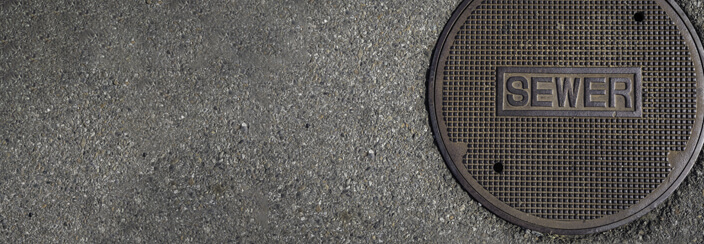|
News
The storm sewer and drainage systems are a vital component of urban infrastructure. It is a complex network of pipes, channels, and tunnels that collect and transport stormwater to prevent flooding and erosion. When it rains or during fast snow melt, water flows into catch basins, which are essentially large concrete boxes with grates on top, located at regular intervals along the sides of roads or other low-lying areas. The water then travels through a series of underground pipes that lead to large retention ponds.
Catch basins are critical components of the storm sewer and drainage system. Catch basins are designed to filter out debris, such as leaves, trash, and other materials, to prevent them from clogging the pipes and causing backups. They are also equipped with grates or screens to prevent larger objects, like sticks or rocks, from entering the system. The catch basins are regularly inspected and maintained to ensure that they are functioning properly, not iced over, and are not in need of repair.
The system is designed to manage a large volume of water during heavy rainfall or fast snow melt, and it requires careful maintenance to ensure that it functions effectively. The stormwater collection is the first step in the process. The system is designed to capture rainwater/snowmelt from streets, parking lots, and other surfaces, and transfer it via pipeline to stormwater settling ponds located on the west side of town and to the south at the NWP grounds. These ponds are strategically located to allow for the slow release of water back into the environment, preventing downstream flooding and erosion.
Without proper management, stormwater can cause significant damage to property and the environment. The storm sewer and drainage system are designed to prevent this damage by providing a safe and efficient means of managing stormwater. The system is regulated by provincial and federal regulations and is carefully engineered to ensure that water is collected and transported to the proper location, where it can be safely released back into the environment where it could affect aquatic life. The system is constantly monitored and maintained to ensure that it is functioning properly, and any issues are quickly addressed to prevent property damage or environmental harm.

The sanitary collection system is a vital component of any modern infrastructure. It is a complex network of manholes and pipelines that work together to transport waste from homes and businesses to treatment holding cells. The system is designed to ensure that all waste is properly collected and treated before being released back into the environment. The pre-treatment process involves the removal of solids and other contaminants to ensure that only clean water is released into local waterways. The collector cells are designed to handle various pipeline sizing and are strategically placed throughout the town to ensure that waste is efficiently transported to the treatment holding cells.
Sanitary treatment cells are an essential component of wastewater treatment facilities, the town has 4 cells altogether that receive raw sewage. These specialized cells use anaerobic digestion to break down organic matter, including bacteria and other harmful pathogens, into simpler compounds. The process occurs in an oxygen-deprived environment, which allows anaerobic bacteria to thrive and consume the organic material present in the raw water. The result is a significant reduction in the amount of harmful bacteria and other pathogens in the wastewater, making it safer to discharge into the environment. The use of anaerobic cells is a highly effective and efficient method of treating raw water, and it plays a critical role in protecting public health and the environment. There is a saturation barrier area within these cells that keep the odours on the bottom.
The anaerobic cell works by creating an environment that is hostile to aerobic bacteria and other microorganisms, allowing anaerobic bacteria to dominate. This process results in the production of biogas, which is a mixture of methane and carbon dioxide. The biogas can be captured and used as an energy source, further increasing the efficiency of the treatment plant. Overall, the use of sanitary treatment cells is a crucial step in the process of treating raw water and protecting public health. It is a testament to the power of science and technology to solve complex problems and ensure a better future for us all.
After filtering through the anaerobic cells, the two Flocculate cells are a natural and effective way of cleaning water. These cells work by clumping together and settling to the bottom of a body of water. This process is facilitated by natural aeration and sunlight, which provide the necessary conditions for the cells to agglomerate. This process is an excellent way to purify water without the use of harsh chemicals or expensive equipment, making it an environmentally friendly solution to water pollution.
The use of bacteria to clean water is becoming increasingly popular due to its effectiveness and sustainability. By introducing specific strains of bacteria to a body of water, it is possible to break down and remove harmful pollutants, leaving behind clean and healthy water. This method is particularly useful for large bodies of water that have been contaminated with toxins or chemicals, as it can target specific pollutants and eliminate them without harming the surrounding ecosystem. Overall, the use of bacteria to clean water is a safe, effective, and environmentally friendly way to ensure that our water supply remains clean and healthy for generations to come.
The treated effluent is discharged once a year through the pipeline into an area south of Fairview. Samples of this discharge are sent to an environmental lab to ensure it meets all provincial and federal environmental regulations. The water leaving the treatment area must surpass the quality of water that is receiving the discharge.